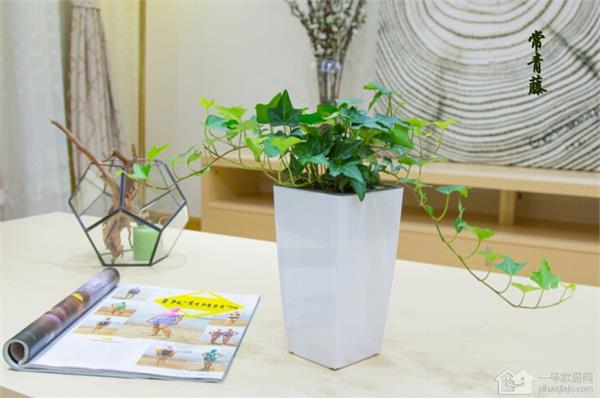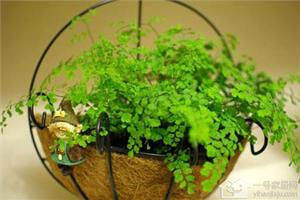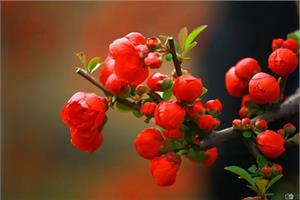Ivy Life habits Culture methods of Ivy
Ivy, also known as ivy, ivy, is a perennial evergreen foliage plant of the family Acanthopanax. Ivy is a typical shade vine, all woody stems, stems up to 3 to 5 meters long, multi-branched, aerial roots on the stem. Delicate branches pilose, rust-colored scaly, leaves alternate, leathery, oil-green smooth. Ivy has a strong adaptability to the environment, like a relatively cool climate, strong cold resistance; avoid high temperature and muggy environment. So, what is the method of raising ivy?

I. Ivy life habits
Ivy is light-loving and shade-tolerant, so it can grow well under the condition of half-light. Avoid direct sunlight in summer, keep the soil moist and often spray water to the plants. Ivy is a perennial evergreen vine of Araliaceae and Ivy, whose leaves are ovate or broadly ovate. Because its branches and leaves are green and bright, and there are many varieties of flowers and leaves, the stem is soft and drooping, which can be used as a potted plant or hanging or standing, decorating the room. Ivy is more hardy, so it's okay to spend the winter indoors.
Ivy is not strict with the soil, and the general soil can grow. But for potted plants, potted soil can be mixed with pastoral soil, plant ash and a small amount of base fertilizer. The selection of plant ash can not only keep the basin soil loose and breathable, but also have more potash fertilizer to meet the growth of ivy. Ivy can apply liquid fertilizer once every two weeks or chemical fertilizer once a month in the growing season. For varieties of flowers and leaves, the proportion of nitrogen fertilizer should not be too high, so as to prevent flowers and leaves from turning green.
The leaf color and shape of ivy are varied, evergreen all the year round, is a beautiful climbing plant, can be used as scaffolding or wall vertical greening. It is also suitable for indoor pot culture, and it is also a very good indoor foliage plant, which can be used as potted plant, hanging basket, totem, plastic plant and so on. Ivy is also the configuration material for cut flowers. In addition, it is a good ground cover material to be planted with other plants. The whole plant can be used as medicine.
Second, the function of Ivy
Ivy is a very popular indoor large potted flowers and trees, especially in the wider living room, study, living room display, elegant style, simple, and with southern flavor. It is a beautiful, regular and world-famous new generation of indoor foliage plants. It can purify indoor air and absorb harmful gases such as benzene and formaldehyde emitted by furniture and decoration, bringing great benefits to human health. Native to Europe, Asia and North Africa. It is very adaptable to the environment. Like the cooler climate, strong cold resistance, can be used as medicine.
Ivy is most commonly used in outdoor walls or courtyards, or in indoor hanging baskets, wherever they are as vigorous as geckos, climbing like cobwebs, and we see a green article every late spring and summer. Its leaves like maple leaves, every florescence will also open yellowish white flowers, very beautiful and fresh, it has become a popular green ornamental plant. Whether in the outdoor environment or indoor can bring a green, bring hope, especially in the indoor is very pleasing to the eye of the green plant, can play a role in decoration and beautification.
Third, the culture method of ivy
1. The temperature should be suitable. Ivy likes warmth, and the suitable temperature for growth is 20 ℃ ~ 25 ℃. It is afraid of heat and is not resistant to cold. Therefore, when placed in indoor maintenance, we should pay attention to ventilation and cooling in summer, and the room temperature should be kept above in winter, and the lowest should not be less than 5 ℃.
2. The light should be moderate. Ivy is light-loving and shade-tolerant. Under semi-light conditions, the internodes are shorter, the leaf shape is the same, and the leaf color is bright, so it is appropriate to culture in a bright indoor light. If you can put outdoor shade for a period of time in spring and autumn, so that you can see more sunshine in the morning and evening, then the vitality will be exuberant and the leaves will be green. However, we should pay attention to prevent the direct light, otherwise it is easy to cause sunburn.
3. Appropriate watering. Watering in the growing season should be dry and wet, and the basin soil should not be too wet, otherwise it is easy to cause rotten roots and fallen leaves. The room temperature is low in winter, especially to control watering and keep the basin soil slightly wet. The northern winter climate is dry, it is best to spray Duchuan once a week with water close to room temperature, in order to maintain air humidity, the plant appears alive, the leaf color is green and shiny.
4. Rational fertilization. Do not apply fertilizer in summer and winter. Do not apply nitrogen fertilizer when fertilizing, otherwise, the patterns and patches on the leaves of mosaic varieties will fade to green. The ratio of nitrogen, phosphorus and potassium should be 1% and 1%. During the peak growing season, the leaves are sprayed with 0.2% potassium dihydrogen phosphate once or twice, which will make the leaves look more beautiful. However, attention should be paid to avoid contaminating the leaves when applying liquid fertilizer, so as not to cause the leaves to scorch.
Finally, this is the end of the knowledge about ivy farming. I hope the above content will be explained to you. In addition, ivy is also often used indoors, especially the indoor anion purifier after decoration, which is believed to be effective in reducing the concentration of harmful substances such as formaldehyde and benzene.
The above is the relevant introduction of this article, I believe you have a simple understanding of this after reading it, if necessary, you can continue to pay attention to the No. 1 home network for more information.
Related
- Wuhan Hospital Iron Tree Blooming Result Was Instantly Frightened by the Gardener Master
- Which variety of camellia is the most fragrant and best? Which one do you like best?
- What is the small blue coat, the breeding methods and matters needing attention of the succulent plant
- Dormancy time and maintenance management of succulent plants during dormancy
- Minas succulent how to raise, Minas succulent plant pictures
- What are the varieties of winter succulent plants
- How to raise succulent plants in twelve rolls? let's take a look at some experience of breeding twelve rolls.
- Attention should be paid to water control for succulent plants during dormant period (winter and summer)
- Watering experience of twelve rolls of succulent plants
- Techniques for fertilizing succulent plants. An article will let you know how to fertilize succulent plants.



